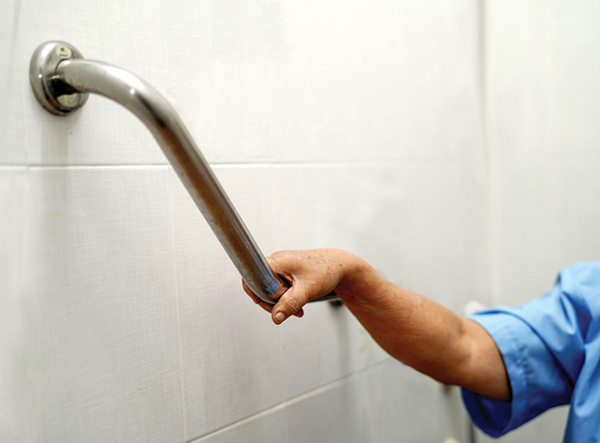»

To improve home visibility:
- Install new lights (such as motion-sensor flood lights) or increase lighting on exterior pathways, porches and doorways.
- Increase home lighting in hallways, stairways and bathrooms with accessibility to light switches at entrances.
- Install light switches that glow in the dark.
- Switches and lamps should be easy to reach.
- Install lighting over the sink, stove and other work areas.
- Keep a magnifying glass for reading small print, where it may be needed (kitchen, bathroom, living room and bedroom).
- Place automatic, light-sensor night lights in hallways and rooms.
- Add lighting to all closets.
- Install a thermostat that’s easy to read.
- Use translucent light shades or frosted bulbs to reduce glare.
- Use full-spectrum bulbs that simulate daylight.
- Open window shades, blinds and curtains for natural light during the day.
To improve kitchen safety:
- Add a counter-height stool to enable sitting while working at the kitchen countertop (if necessary, have cabinet shelves or drawers removed to allow room for your knees).
- Be sure controls on the stove and oven are easy to see and reach.
- Elevate the dishwasher to reduce bending.
- Choose a side-by-side or drawer-style refrigerator.
- Do not wear loose clothing around the stove.
- Place heavier objects on the ground or low level shelves.
- Never overload electrical outlets.
- Keep electrical appliances away from the sink.
- Smoke detectors should be present on each level of the home.
To more easily reach and move around:
- Replace round doorknobs with easier-to-use lever-style door handles.
- Place a chair or table near the entrance door to place packages when locking or unlocking the door.
- Use non-slip handrails and non-skid step edges on stairways.
- Use non-skid carpet runners to alleviate slippery floors and hold down carpet edges.
- Lower rods and shelves in closets and cabinets. Consider pull-out or pull-down shelves, or drawers designed to close automatically.
- Install grab bars on bathroom walls.
- Provide an elevated toilet seat or install a safety frame for ease of use.
- Install a walk-in or no-threshold shower, bath seat or bench and an adjustable, hand-held showerhead.
- Place the washer, dryer, shelves and work surfaces at reachable heights and consider a front-loading washer.
- Remove clutter and low-lying objects like coffee tables, which can trip a person and lead to bruising or other injuries.
- Use the same safety precautions in both downstairs and upstairs to lessen the use of stairways.
- Keep a cell phone within reach at all times or install a telephone in multiple rooms (including the bathroom).
- Develop a family escape plan, in case of fire.
SOURCE: AARP
